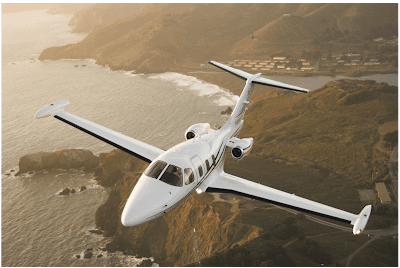SRM is the art and science of managing all the resources (both on-board the aircraft and from outside sources) available to a single pilot (prior and during flight) to ensure that the successful outcome of the flight is never in doubt.
The emergence of very light jet (VLJ) aircraft may also affect air travel. [Figure] Central to their economic success is the concept of single-pilot operations. Since the aircraft is heavily automated, the pilot’s workload may actually be less than the current workload in some high performance single-engine aircraft. This allows more time for the pilot to gather and analyze information about weather, winds, landing conditions, fuel state, pilot physical condition, and passenger desires.
 |
| Very light jet aircraft in flight |
However, unless the pilot is trained to manage all of these factors and to let the aircraft automation assist, the workload may be very high. SRM training helps the pilot maintain situational awareness by managing the automation and associated aircraft control and navigation tasks. This enables the pilot to accurately assess, manage risk, and make accurate and timely decisions. SBT enhances SRM because SBT helps pilots learn how to gather information, analyze it, and make decisions.
